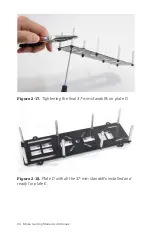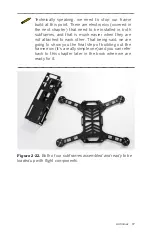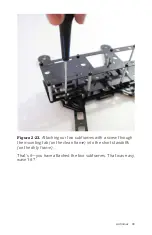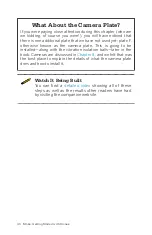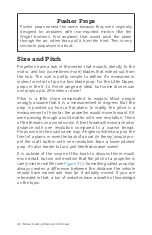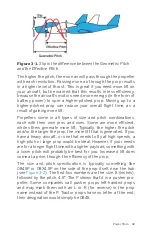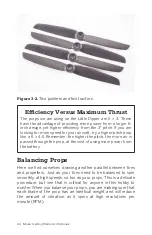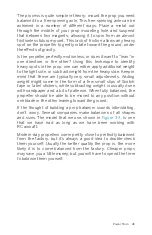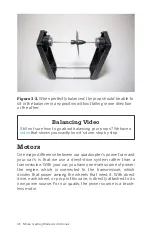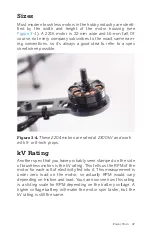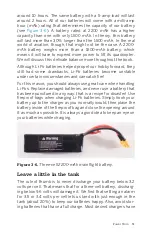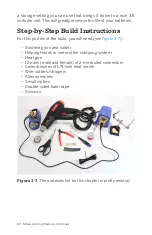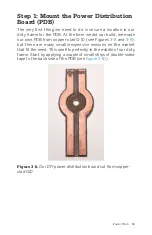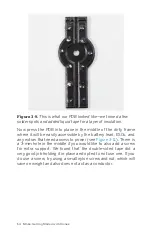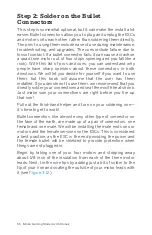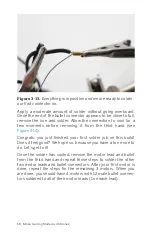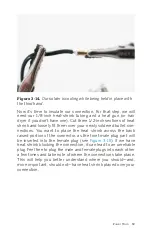
Calculating RPM
A 900 kV motor with a battery putting out 12 volts will spin at
10,800 RPM (12 x 900) under no load. The same motor using a
larger battery (16.8 volts) would spin at 15,120 RPM.
Pairing with the Right Props
Each motor will perform at different levels depending on the
propeller it is paired with. These days, the guesswork is usually
minimal, because most of the motor manufacturers post the
recommended prop specs for their motors. To determine the
correct prop for your build, you should have an idea of what your
drone’s total weight will be once you are done. The heavier you
plan your build to be, the larger prop you should use based on
the manufacturer’s suggestions.
Total Lift
A common term you will hear in relation to motor and prop com-
bos is their total
lift
, which is the amount of upward thrust a
motor/prop combo generates in the real world. This is typically
documented with a weight value that represents the lift gener-
ated at 100% throttle command. (Most manufacturers provide
this information.) The 2204 motors we used on the Little Dipper
build can generate a total lift of 539 grams with a 6 × 3 prop. If
we changed props, the lift number would change. Obviously, this
is measured for each motor and propeller. To calculate the lift of
the entire copter, multiple your results by the numbers of arms
on your copter (four for our quad). For the Little Dipper, that
works out to be (4 × 539 grams) 2156 grams of lift!
48 Make: Getting Started with Drones
Summary of Contents for Terry Kilby
Page 1: ......
Page 3: ...Make Getting Started with Drones Terry Kilby and Belinda Kilby...
Page 26: ......
Page 90: ......
Page 126: ......
Page 153: ...Figure 9 10 Compass setup Figure 9 11 Compass calibration ArduPilot Mega APM Setup 141...
Page 198: ......

